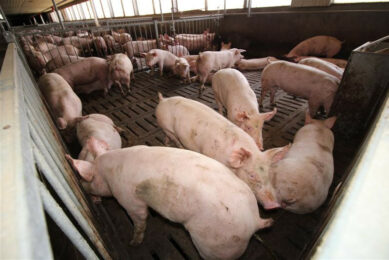I have a vaccine against ASF. Now what?

Finally, the road is known how to produce a vaccine against African Swine Fever. Legal and financial issues, however, now hamper the further development of a commercial vaccine. All sectors involved need to have an open mind.
In Spain, African Swine Fever (ASF) led to a period of pig underdevelopment, from 1957 to 1995. On the upside, the 40-years war against the virus left my country much better prepared to fight animal diseases.
The long and costly ASF-eradication campaign, strongly supported by the European Union in its last years, paralleled the formation of very competitive multi-disciplinary expert teams around the world, some of them today still operative in surveillance and official ASF-diagnostic duties and/or in basic research and most of them are gathered around an umbrella known as the Global African Swine Fever Research Alliance (GARA). I would like to dedicate this entry to summarise the lessons learned from our vaccine discovery efforts, hoping to leave an optimistic message for the readers but also several open questions.
Hindering of development of ASF vaccine
The development and availability of vaccines against ASF has been hindered by many factors, one of them being the small number of research groups devoted to vaccine discovery.
Additionally, the antigenic heterogeneity of ASFv, combined with the inherent genetic complexity of the virus, makes the development of effective vaccines a complex endeavour.
Inactivated vaccines have failed so far at inducing solid protection against ASFv and subunit vaccines are still in their early developmental stages, while in contrast, live attenuated viruses (LAVs) confer very solid protection, mostly against homologous viruses. Although safety concerns have avoided LAVs conquering the vaccine market, their use as experimental vaccine models have allowed demonstrating the protective role that both: specific antibodies and T-cells can play in ASF-protection.
New expectations in the field
The feasibility of genetically manipulating the ASFv genome manipulation has opened new expectations in the field. Thus, deleting key specific virulence factors from the ASFv genome has rendered a collection of recombinant LAVs capable to confer very solid protection against experimental challenge with homologous viruses.
One of the main limitations of the ASF-LAVs so far tested is their poor cross-protective capabilities, thus narrowing their broad use. A recombinant LAV recently developed in our own laboratory has demonstrated to be able to circumvent this limitation, at least partially. This outcome was the fruit of the scientific collaboration between the CBMSO-CISC (Madrid), CReSA-IRTA (Barcelona) and Boehringer Ingelheim (R&D, Hanover, Germany).
Experimental vaccine can confer protection
Our experimental vaccine has been able to confer protection not only against the homologous virus but also, against viruses from different genotype including Georgia07, the ASFv strain still circulating in continental Europe.
Despite these spectacular results, there is still room for improvement, overall in terms of biosafety and DIVA-capabilities, both easily achievable in a short-term by combining strategies already available.
Responding to unanswered questions
In my perspective, the problem today is not whether a vaccine against ASFv can be available, but how to respond to many unanswered questions. On the one hand, ASF-free wealthy areas such as the EU are not going to allow its use and in the best scenario the vaccine market will be reduced to emergency scenarios as today occur for other diseases of obliged declaration such as Classical Swine Fever (CSF) of Foot-and-Mouth Disease (FMD) against which there are commercially available efficient vaccines.
Under these premises, who is willing to produce a recombinant LAV against ASF at an affordable price? And even if there is some charity soul willing to do so, how to implement the vaccine in less favoured areas where it is really needed?
Positive attitude
These are questions that should not wait to be answered and that would require a positive attitude from all sectors involved. Failing to do so will contribute to the underdevelopment of the affected areas and will condemn ASF-free areas to future outbreaks.
In other words: our gates should open, to welcome a ‘Gates’.











